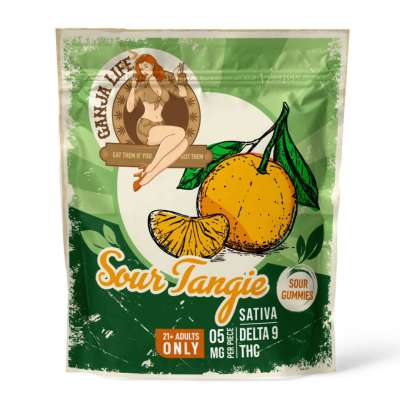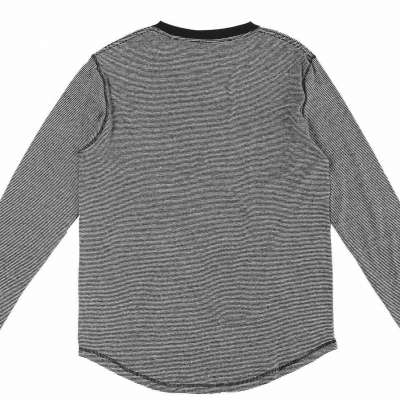
www.thecollector.com
Not Just Balto: 7 Other Heroes From Nome’s 1925 Serum Run
Living in isolated Alaska has its risks. Particularly in the early days of its development, Alaskan citizens had limited access to resources, especially in the winter when the snow and ice made transport by traditional means difficult. In 1925, disaster struck when an outbreak of diphtheria hit the town of Nome. With the route impassable by plane or ship, the citizens relied on sled dog teams to bring a lifesaving antitoxin to its people. One dog in particular, Balto, received many accolades as the story’s hero but was far from the only contributor to the success of the Serum Run.
Why Balto?
The statue of Balto in Central Park, photo by Tony Hisgett. Source: Wikimedia Commons
If Balto isn’t the hero of the story, why does he get all of the credit? For instance, after the trip’s conclusion, Balto went on tour and eventually lived out his life in a zoo, gathering public adoration. A statue of him stands in New York’s Central Park. The dog himself was taxidermied after his death and is still on display at the Cleveland Museum of Natural History.
Movies, including a Disney adaptation, have committed him to heroic memory. Balto’s fame resulted from his public-facing role in the run. He was the lead dog of the sled that made the final leg of the relay-style journey, bringing his team and musher, Gunner Kasson, into Nome on February 2, 1925 with 300,000 vials of antitoxin in tow. Cheering, hopeful crowds rushed to greet the frozen musher and his team after their 55-mile journey.
Despite the fact that 20 mushers and 150 dogs traveled almost 700 miles in five and a half days to save Nome, Balto received an outsized portion of the credit for completing the journey. However, the numerous other contributors to the success of the Serum Run must not be forgotten.
1. Togo: The Oft-Forgotten Hero
Leonhard Seppala poses with six sled dogs, with Togo on the far left. Source: Wikimedia Commons
If one dog deserves outsized recognition for his role in the run, many argue that it should be Togo. Named for a Japanese Admiral, Siberian Husky Togo was bred and owned by Leonhard Seppala, a Norwegian and accomplished dog racer. As a puppy, Togo had a throat disorder, and Seppala adopted him as a pet, not believing that he would amount to a proper sled dog.
Togo refused to stay with his adopter, escaping and making his way home to Seppala multiple times. Eventually, Seppala conceded, allowing the little dog to tag along as he trained his sled teams. Togo tended to get in the way, so Seppala harnessed him to the team to channel his energy. Eventually, Togo ran with the best of them, even beside the lead dog. He soon became an invaluable part of Seppala’s team.
At the time of the Nome Serum Run, Togo was twelve years old. He led Seppala’s team on the longest leg of the journey, about 264 miles, while the other teams averaged 31. After the race concluded, Togo briefly went on tour with Seppala and other dogs from the run. He and Seppala moved to Poland Spring, Maine, where the musher opened a kennel to breed Siberian Huskies.
Togo lived in Maine and was laid to rest at the age of 16. His mounted body resides at the Iditarod Race Headquarters in Wasilla, Alaska. Seppala, who bred hundreds of dogs over the years, said, “I never had a better dog than Togo. His stamina, loyalty, and intelligence could not be improved upon. Togo was the best dog that ever traveled the Alaska trail.”
2. Leonhard Seppala Went the Distance
Seppala after winning the 8th All Alaska Sweepstakes sled dog race in 1915, ten years before the Serum Run. Source: Alaska’s Digital Archives
Leonhard Seppala was considered Alaska’s most venerated musher at the time of the run. Originally drawn to Alaska by the opportunity for a mining job, Seppala soon became involved in mushing and training sled dog teams, proving exceptionally skilled at the task. He began racing and garnering local acclaim. Therefore, Seppala didn’t hesitate to join the challenge of moving the diphtheria antitoxin.
In addition to being well suited to the job at hand, he was uniquely motivated by the fact that his eight-year-old daughter, Sigrid, lived in Nome and was in danger of contracting the spreading illness, to which children were especially susceptible.
Today, Seppala is remembered not only for completing the longest leg of the Serum Run journey in brutal conditions but also for the care he showed his dogs during the race and throughout his career. The Leonhard Seppala Humanitarian Award is given annually to the Iditarod participant who demonstrates the best care for their dog team.
3. Mark Summers’ Lightbulb Moment
Dog sleds were not an unusual form of travel in Alaska at the time. Source: Sandra Seitamaa
Superintendent of the Territorial Board of Health in 1925, who also ran the mining company Hammond Consolidated Goldfields, Summers was behind the idea of using mushers to complete the Serum Run. The Board of Health gathered to determine how exactly to get the life-saving serum to town. Ice prevented ships from reaching the shore, and winter flight was still experimental. Summers proposed a musher start in Nenana, where the serum was currently located, and meet a second musher at the halfway point, who would then ferry the antitoxin to Nome. The Board approved the idea, and the governor suggested adding more mushers so that the teams were as fresh and fast as possible.
4. Dr. Curtis Welch Faced Tremendous Pressure
Dr. Welch recognized the importance of having anti-toxin on hand but could not procure it in time. Source: Mufid Majnun
As the only doctor in Nome, Dr. Curtis Welch was the one who determined that what was presumed to be an outbreak of tonsillitis was, in fact, diphtheria. Recognizing the potential for an epidemic, Dr. Welch immediately contacted authorities for assistance. He believed that without fresh antitoxin, there was the potential for a 100% mortality rate among those who were and would become affected by the diphtheria bacterium. Since diphtheria is spread by respiratory droplets, it had the chance to easily rage through Nome.
Welch had previously ordered the necessary antitoxin, but shipping troubles had prevented it from reaching his city. Dr. Welch was faced with a medical crisis and did all he could to stay it until the medicine could arrive. He utilized supportive care and even expired bottles of antitoxin at higher doses to attempt to manage the disease.
5. “Wild Bill” Shannon Was an Adventurer
Shannon’s wife identified her husband’s remains by the materials that accompanied them, including his pickaxe. Source: Tim Foster
Willard J Shannon, better known as “Wild Bill,” first came to Alaska as a sergeant with the army. After his contract, he stayed in Alaska, first managing a store, then heading to the gold fields.
A capable musher, Wild Bill didn’t hesitate to join up when asked to be part of the Serum Run. He made the first part of the journey, leaving Nenana and traveling 52 miles to Tolovana, where the next team waited. His leg of the journey was especially difficult, with temperatures dropping to sixty-five degrees below zero. Frostbitten, Shannon handed the serum package to Edgar Kalland in less than 24 hours. He lost three of his dogs to frostbitten lungs as a result of the trip.
Shannon experienced some celebrity after the conclusion of the run but eventually returned to mining with his wife, Anna. In 1937, Wild Bill Shannon disappeared. Concerned about foul play, his family contacted the authorities and human bones were later discovered. Anna identified some belongings that were found with the remains as belonging to her husband, but his cause of death was never determined.
6. Edgar Kalland Froze to His Sled
Though Edgar Kalland wasn’t from Nome proper, pictured here in 1916, he didn’t hesitate to contribute. The young man, 20 in 1925, spent his life in the Yukon and the Athabascan village of Kaltag
Taking on the second leg of the journey, Kalland traveled from Tolova to Manley Hot Springs. Though the temperature had warmed slightly from when Shannon started the trip, it was cold enough that Kalland’s hands froze to the handlebar of his sled. When he arrived at Manley, the owner of a roadhouse had to pour hot water over his hands to remove them from the sled. Kalland traveled thirty-one miles to complete his portion of the run.
7. Charlie Olson Persisted Despite the Chill
Charlie Olson faced biting winds on his leg of the trip. Source: Zac Durant
Charlie Olson traveled 25 miles from Golovin to Bluff during the Serum Run. While his journey was shorter than some, it was arduous. Forty-mile-per-hour winds were at times so severe that they blew Olson and his team off the trail. Added to the temperatures hovering around 30 degrees below zero, the chill was biting.
Olson’s dogs became stiff due to the cold, and when stopping to blanket them, he himself suffered frozen fingers as he had to remove his bulky mittens for the task. He completed his leg of the journey faster than anticipated, as it was presumed he had stopped to wait out the storm when he had persisted.
No Contribution Was Too Small
In 2020, a group of mushers re-created the serum run. It took two and a half weeks. Musher Julia Deloach is pictured with her team. Source: KNOM
Regardless of the length of their leg of the relay or the difficulty of the conditions, all of the mushers who participated in the Serum Run of 1925 deserve to be remembered. Without these brave souls, it is possible that the death toll in Nome could have been astronomical.
In addition to “Wild Bill” Shannon, Edgar Kallands, Charlie Olson, and Leonhard Seppala, Dan Green, Johny Golfer, Sam Joseph, Titus Nikolai, Dave Corning, Harry Pitka, Bill McCarty, Edgar Nollner, George Nollner, Charlie Evans, Tommy “Patsy” Patson, Jack “Jackscrew” Nicolai, Victor Anagick, Myles Gonangnan, Henry Ivanoff, and Gunnar Kaasen all participated in the run to some extent.
Furthermore, these men would not have been able to complete their mission without their teams of steadfast, hardworking dogs—some of which gave their lives in pursuit of the delivery. Dozens of other government and medical officials played roles in making sure the medicine was secured and delivered. While Balto is the name most heavily associated with the 1925 Serum Run that saved the citizens of Nome, many others are entitled to a place in the halls of memory.














